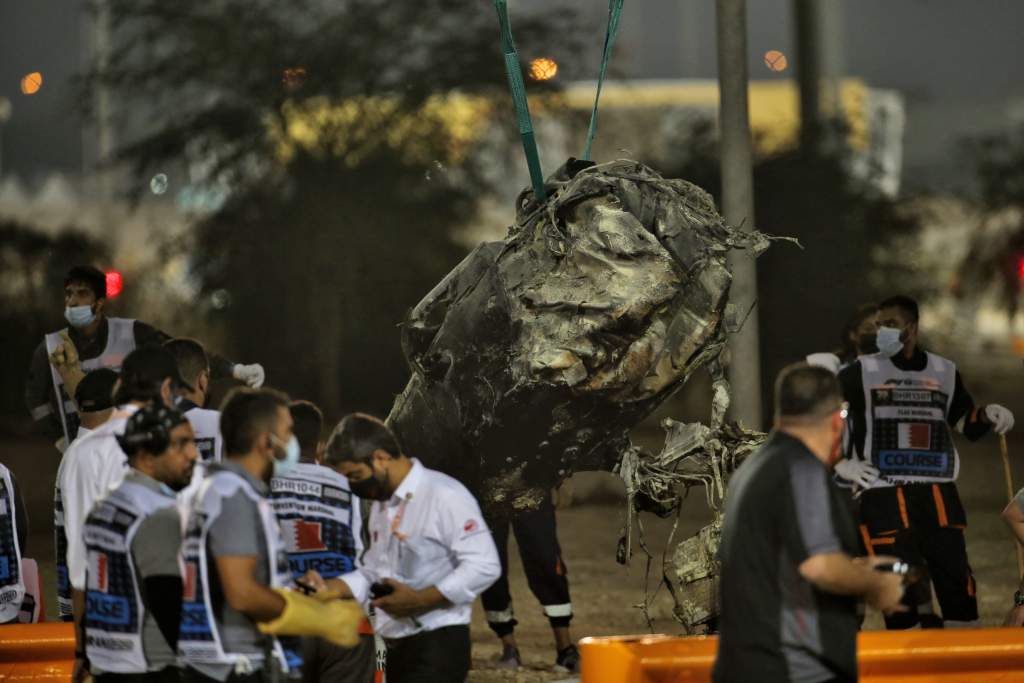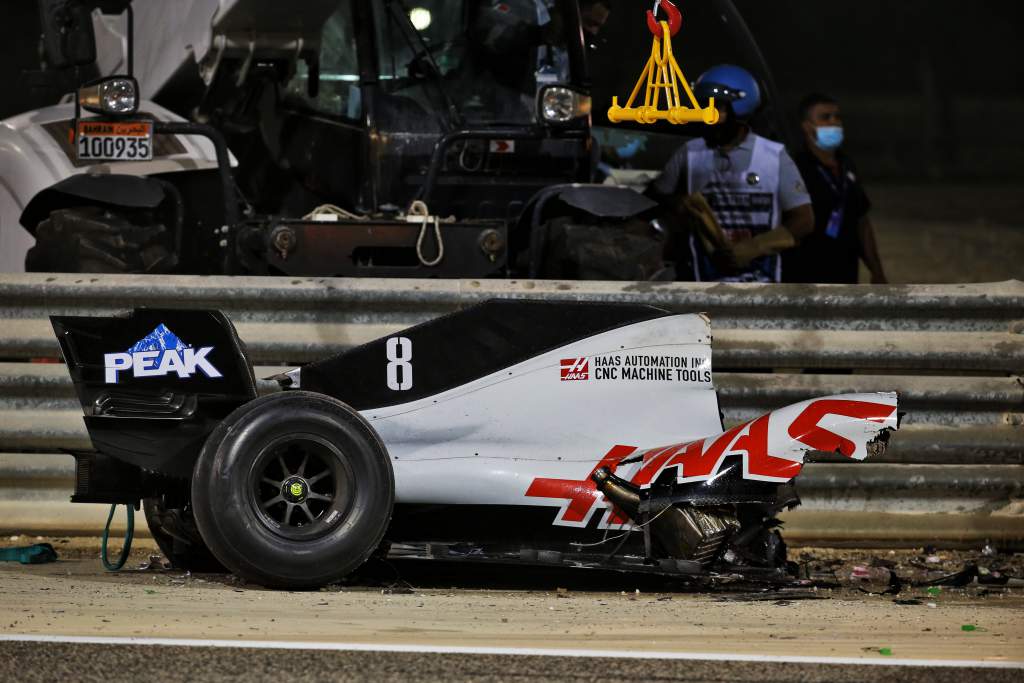The FIA has outlined the initial targets of its investigation into Romain Grosjean’s violent, fiery crash in the Bahrain Grand Prix, a process expected to take up to two months.
Grosjean somehow escaped one of F1’s worst crashes in recent memory last Sunday with only burns on the back of both hands, after his car pierced a barrier on the opening lap, split in two and became engulfed in flames.
It was immediately clear that various FIA safety advances – including the strength of the monocoque, performance of the halo driver protection device and integrity of reinforced fireproof racewear – played vital roles in helping Grosjean withstand the crash itself and then the flames, and escape to safety.
However, an in-depth investigation will follow as per standard procedure, with the FIA safety department analysing around 30 serious circuit racing accidents a year.
The FIA says data collection will be “at the heart” of the investigation and use various video streams, including the driver-facing, 400 frames-per-second camera to “reveal in slow motion what happens to him during the accident”.
In-ear accelerometers moulded to fit inside a driver’s ear canal will have measured the movement of Grosjean’s head in the crash, while the in-car accident data recorder will reveal specific speed and force information.
The investigation will include an assessment of competitor safety devices such as the helmet, HANS device, safety harness, protective clothing, survival cell, headrest, in-car extinguisher system and the halo.

Chassis integrity and safety barrier performance will also be analysed to understand the consequences of an impact of that energy – which Haas said was more than 50g – and trajectory. Sebastian Vettel was among those to raise a serious concern over how the barrier split apart and allowed Grosjean’s monocoque to end up embedded between the railings.
The role of the track marshals and medical intervention team – after medical car driver Alan van der Merwe and medical delegate Dr Ian Roberts played an initial part in trying to calm the flames and help Grosjean escape – will also be looked at.
“The investigation is expected to take around 6-8 weeks to complete before findings are made public,” said the FIA.
Information will then be added to the FIA’s world accident database, which “enables researchers to study individual accident cases and when considered collectively, the statistics generated are used to identify frequently occurring risk factors and prioritise research projects”.
A ‘Serious Accident Study Group’ also exists to utilise this information across every FIA discipline.
FIA Safety Director Adam Baker said: “As with all serious accidents, we will analyse every aspect of this crash and collaborate with all parties involved.
“With so much data available in Formula 1, it allows us to accurately determine every element of what occurred and this work has already begun.
“We take this research very seriously and will follow a rigorous process to find out exactly what happened before proposing potential improvements.”

Grosjean was discharged from hospital on Wednesday this week and hopes to return for the Abu Dhabi season finale, which will likely be his F1 farewell.
On Wednesday he shared footage of the F1 medical team’s initial reaction to his crash, calling it “incredible” and thanking the efforts of those involved.
“Look at the professionalism of the fireman, trying to keep the fire away from me in the car,” he said.
“Look at the action on Ian Roberts and his involvement. I told him he was a hero, he went into the fire as much as he could to save me.
“Finally, this is also the moment I realised I was going to live. Extracting my body from the chassis.
“Yes it burned me and yes it was painful but that’s nothing compared to the relief I felt as soon as I could get up.
“I felt Ian’s hands pulling me over the barrier and knew I was safe. I remember every second of it and life will never be the same again, but I’m sure for the best.
“I met with death and that is the worst feeling I ever had.
“But I’m alive and will enjoy every second of life and every small win in a much better way from now on.”
View this post on Instagram



